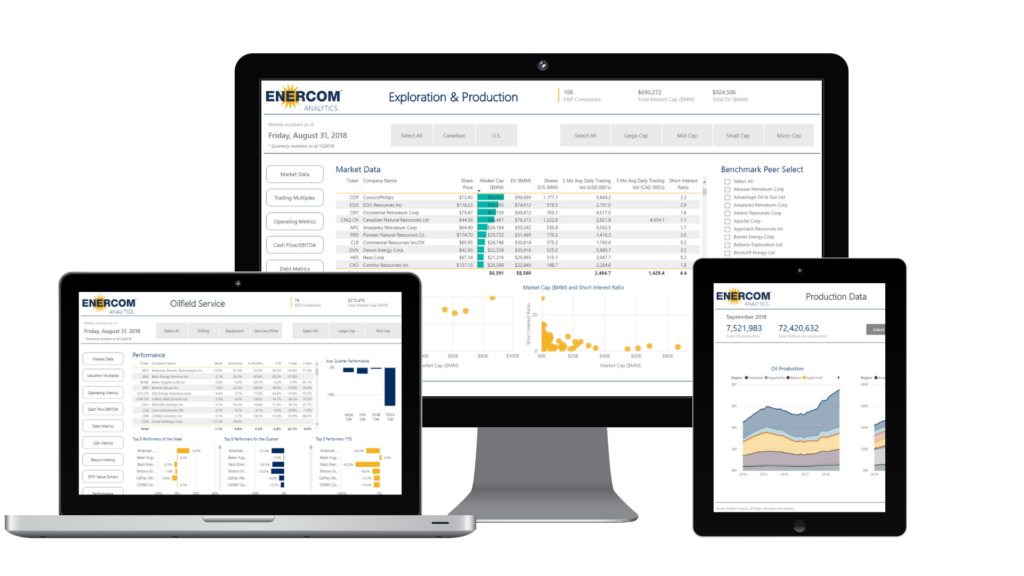Production averaged 9.9 MMBOPD in December
On a day when U.S. commodities benchmark West Texas Intermediate (WTI) traded at $63.24, the highest in more than two years, the EIA came out with new production figures. As U.S. shale producers blaze ahead at turbo-speed, the EIA’s number crunchers have taken note.
The EIA is out with the latest edition of its Short-Term Energy Outlook, examining projections for the energy industry for the next two years. This is the first STEO to forecast through 2019 and it contains updates for 2018 forecasts.
Get ready to break records in every quarter of 2018
Current forecasts predict the U.S. will break records for oil production in every quarter of 2018, growing at 10.5% through the year. The EIA predicts this growth will continue through 2019, if at a slower rate, forecasting 5.6% oil production growth in 2019.
Preliminary data indicates the U.S. produced 9.9 MMBOPD in December, literally only a few barrels shy of the highest quarterly production ever reported by the U.S. – 10.0 MMBOPD, in Q4 1970.
Oil production in Q1 2018 is predicted to reach 10.04 MMBOPD, meaning a new record will be achieved immediately. Production through the next two years will go well beyond the previous production peak, exceeding 11 MMBOPD in Q4 2019.
2018 gas production to grow by 9.3%: EIA
The EIA also forecasts significant growth in natural gas production, though gas growth is not expected to be quite as rapid as oil production. Gas output is forecasted to average 80.42 Bcf/d in 2018 and 83.02 Bcf/d in 2019, representing growth of 9.3% and 3.2%, respectively.
Consumption: gas consumption growth to outpace oil
U.S. oil and gas consumption is expected to keep growing, though not as quickly as production in the next two years. The EIA forecasts liquids demand will grow by 2.4% in 2018 and 1.7% in 2019, reaching just under 21 MMBPD in Q3 2019, compared to an average of 19.84 MMBPD in 2017. U.S. liquids demand growth is expected to outpace worldwide growth in both 2018 and 2019. Chinese demand, one of the most important growth markets for oil, will slow. While the country’s oil consumption grew by 3.1% in 2017, this will fall to 2.6% in 2018 and 2.4% in 2019. Gas demand will be more robust, growing by 4.7% in 2018 and 2.8% in 2019.
Prices down from current levels
The EIA predicts oil prices will fall from the current highs, but will remain well above levels of the past few years, during 2018 and 2019. WTI is forecasted to average $55.33/bbl in 2018, rising to 57.43/bbl in 2019. This is below the current spot of $62.88/bbl, but above the $50.79 WTI averaged over 2017.
Natural gas prices, on the other hand, are expected to fall in the coming year, dropping from $2.99/MMBTU in 2017 to $2.88/MMBTU in 2018 and $2.92/MMBTU in 2019. This low price will boost consumption though.
Electricity generation from natural gas to increase from 32% to 34% of total generation by 2019
The EIA predicts natural gas’s share of total electricity generation will rise from 32% in 2017 to 33% in 2018 and to 34% in 2019, as a direct result of low natural gas prices.
EIA gets new Administrator
Dr. Linda Capuano began service today as Administrator of the EIA. As EIA’s ninth administrator, Capuano is responsible for directing the nation’s primary energy statistical and analytical agency.
Prior to her appointment as EIA Administrator, Capuano was the fellow in energy technology at the Baker Institute Center for Energy Studies. She was also on the faculty of Rice University’s Jones Graduate School of Business, where she taught operations strategy for the executive MBA program. Her research interests in the energy-water-food nexus focused on accelerating the treatment and use of non-fresh water sources.
Capuano’s career has centered on commercializing technology innovation through a network of contacts and experience in high-tech companies, where she has guided new technologies from design to successful commercialization. She previously served as an officer and company vice president of technology at Marathon Oil Corp.; senior vice president of engineering design at Solectron Flextronics; executive vice president and chief technology officer at Advanced Energy Industries; corporate vice president of technology strategy at Honeywell; general manager of wide body aircraft auxiliary product units at Honeywell AlliedSignal Aerospace; and manager in computer memory product development at IBM. She co-founded and served as chief financial officer of Conductus, a Silicon Valley start-up that commercialized ceramic superconductor technology discovered in the 1980s.
Capuano has served on the board of directors of Peak Reliability, which provides bulk electricity system oversight within the Western Electricity Coordinating Council’s footprint; and the Board of Governors of California Independent System Operator. She is an associate member of the National Academy of Sciences, an elected lifetime position.





